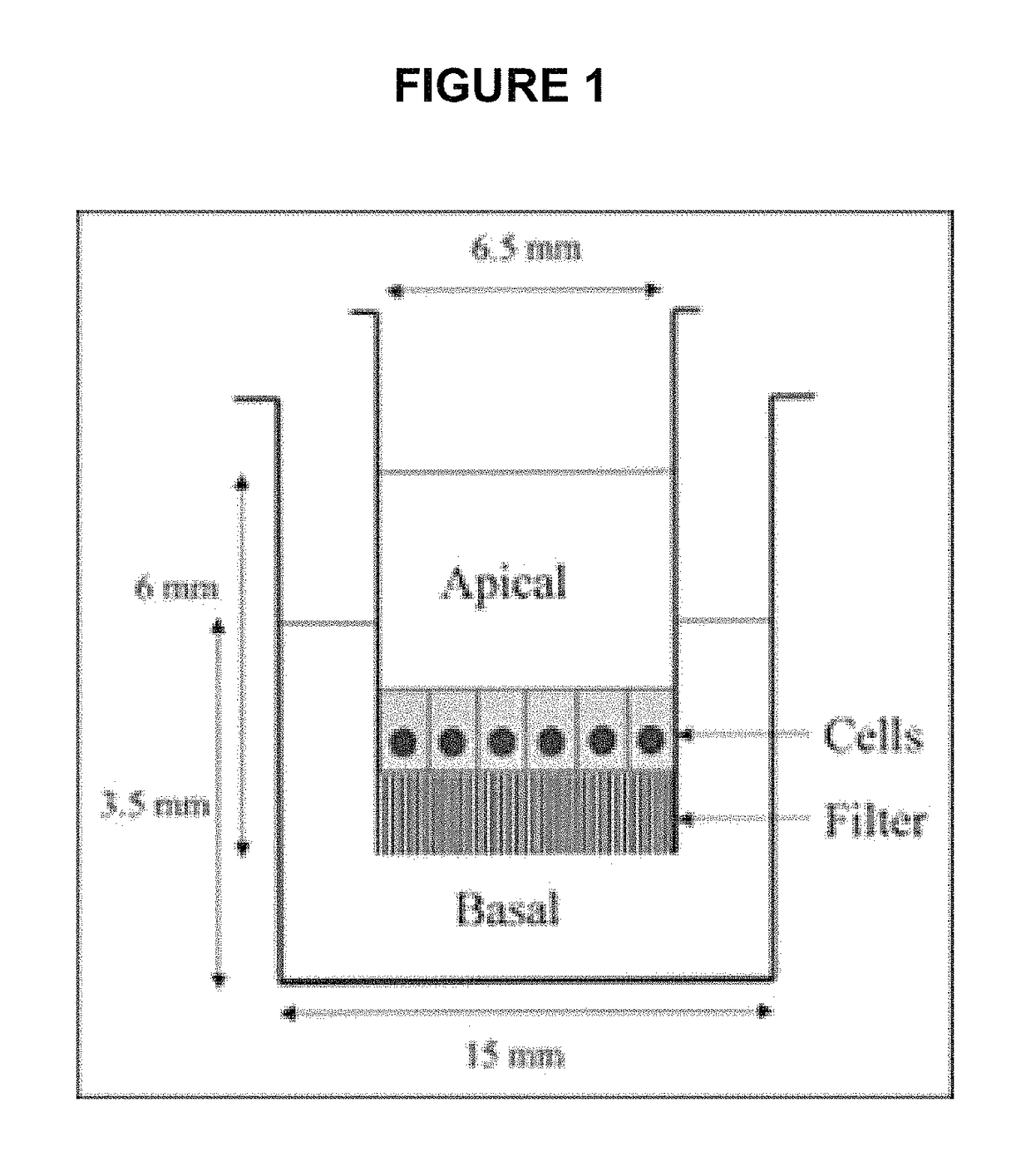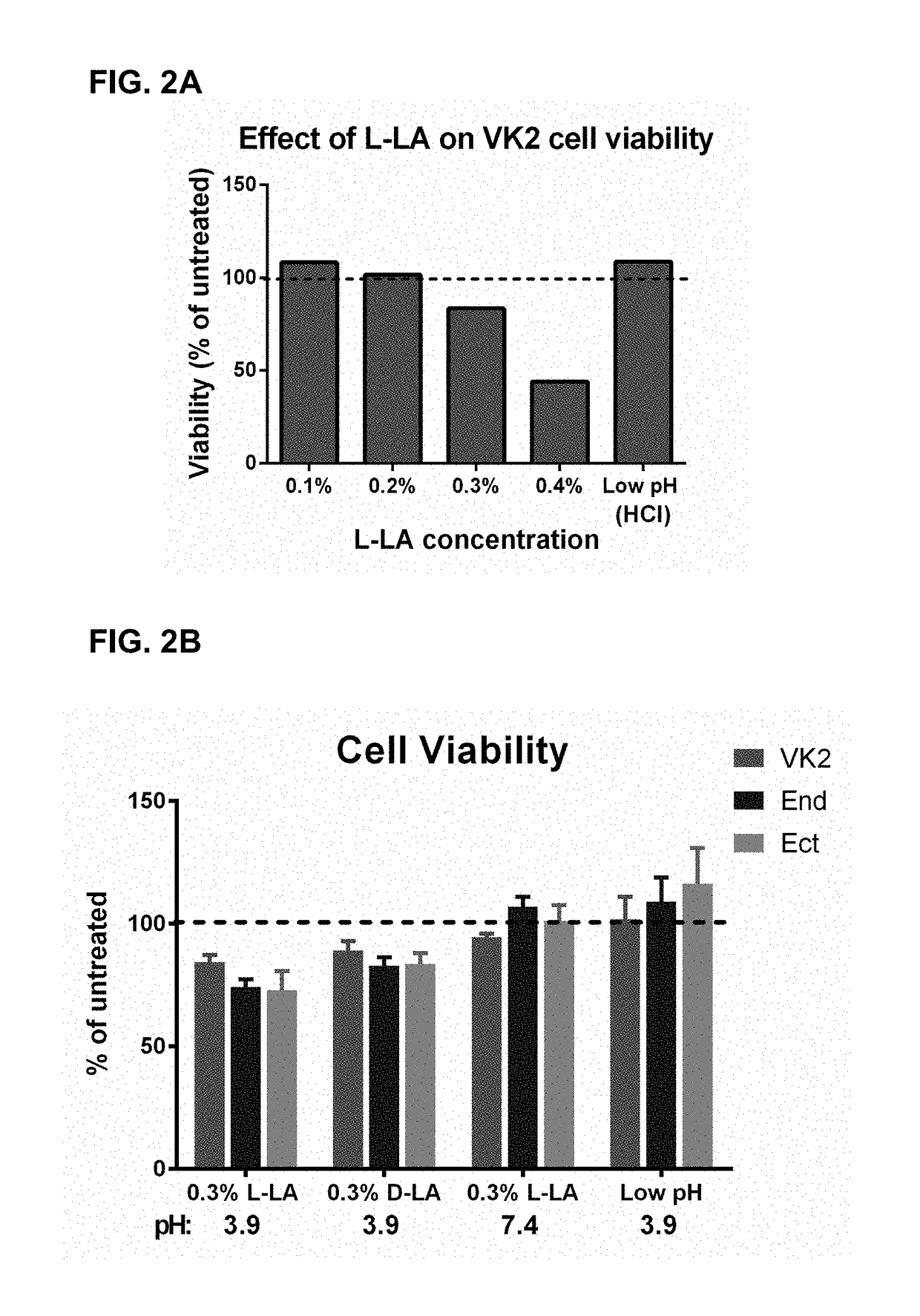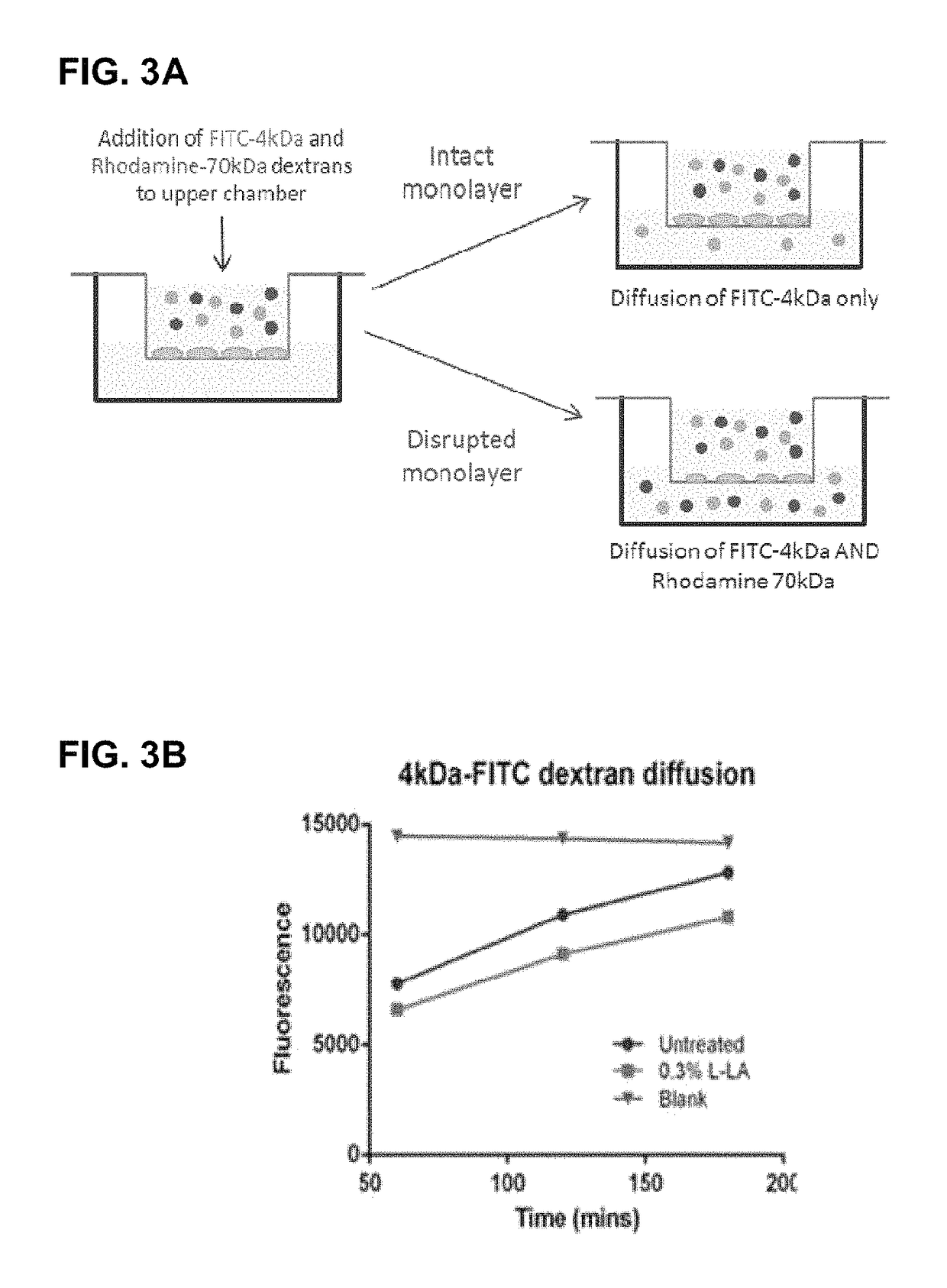Therapeutic method
a technology of inflammatory response and therapeutic method, which is applied in the direction of antipyretics, pharmaceutical non-active ingredients, analgesics, etc., can solve the problems of multi-organ failure, associated tissue damage, and septic shock
- Summary
- Abstract
- Description
- Claims
- Application Information
AI Technical Summary
Benefits of technology
Problems solved by technology
Method used
Image
Examples
example 2
[0287]Concentrations of L-LA up to 0.3% had a minimal effect on the viability of VK2, epithelial cells (FIG. 2A). 0.3% L-LA and D-LA had a similar but very small effect on VK2, End and Ect cell viability, while 0.3% L-LA neutralised to pH 7.4 or low pH alone (adjusted to pH 3.9 with HCl) was non-toxic (FIG. 2B).
example 3
[0288]This model can also be used to determine the effect of acids on monolayer integrity (FIG. 3A) by measuring the diffusion rate of small (4 kDa, readily diffusible, FIG. 3B) and large (70 kDa, largely non-diffusible, FIG. 3C) fluorescently labelled dextrans across the epithelial monolayer. We show that 0.3% L-lactic acid (pH 3.9) does not markedly alter the permeability and thus monolayer integrity of the VK2, Ect or End cell lines (FIG. 3D). Thus, L-LA at near physiologic concentrations and pH does not affect viability or permeability of the VK2, or Ect or End cell lines cultured in transwells.
[0289]Virucidal, relatively non-toxic concentrations of L-LA (0.3%) elicit an anti-inflammatory response from epithelial cells of the FRT and reduce the pro-inflammatory response of cells to TLR-induced inflammation. D-LA had a similar anti-inflammatory effect, but L-LA at neutral pH nor low pH media alone did not. These results suggest the potential for LA to be used in topical microbici...
example 4
[0290]An analysis was performed to determine if physiologic noncytotoxic concentrations of L-LA alter the release of immune modulators by VK2, End and Ect cells by incubating cells in transwells with L-LA for 24 h at 37° C. in serum free keratinocyte medium and harvesting supernatants (from the apical chamber) for release of immune modulators. 0.3% L-LA present in the apical medium reduces secretion of pro-inflammatory mediators IL-6 (FIG. 4A) and IL-8 (FIG. 4B) induced by the TLR3 agonist PIC by epithelial cells from the FRT. A similar trend was observed with the bacterial TLR agonists Pam3Ck (TLR2) and lipopolysaccharide (TLR4) in End and Ect cells (see FIG. 7 for data from End cells). These data show that L-LA significantly reduces IL-6 and IL-8 production from epithelial cells.
PUM
| Property | Measurement | Unit |
|---|---|---|
| pH | aaaaa | aaaaa |
| pH | aaaaa | aaaaa |
| pH | aaaaa | aaaaa |
Abstract
Description
Claims
Application Information
 Login to View More
Login to View More - R&D
- Intellectual Property
- Life Sciences
- Materials
- Tech Scout
- Unparalleled Data Quality
- Higher Quality Content
- 60% Fewer Hallucinations
Browse by: Latest US Patents, China's latest patents, Technical Efficacy Thesaurus, Application Domain, Technology Topic, Popular Technical Reports.
© 2025 PatSnap. All rights reserved.Legal|Privacy policy|Modern Slavery Act Transparency Statement|Sitemap|About US| Contact US: help@patsnap.com



